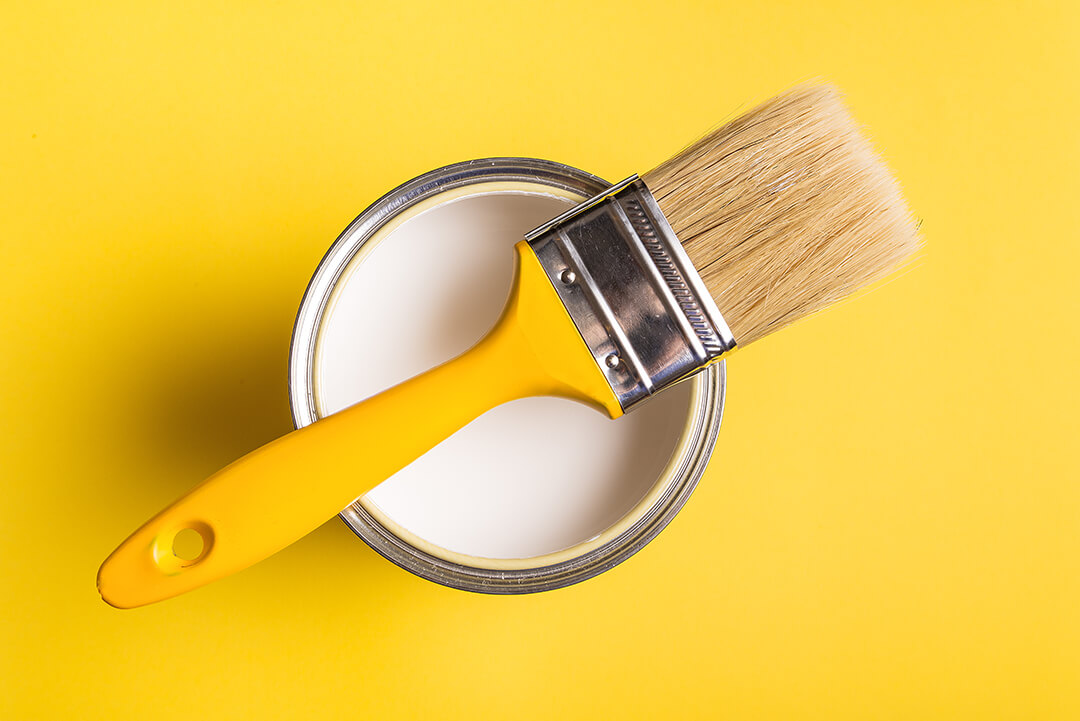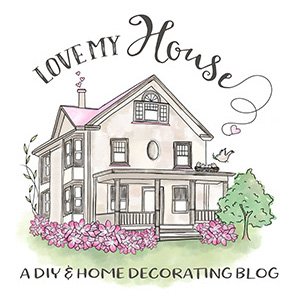
How to Pick the Perfect Paint for Your Room
So, I’ll break down the options for you:
1. Oil-based vs Water-based (Latex)
- Oil-based paint is more durable, but takes longer to dry, and cleanup requires turpentine or paint thinner.
- Latex dries more quickly and doesn’t have as strong an odor. It may not be as hard or smooth as oil-based, but it’s much easier to work with. You can easily wipe up a drip or spill and cleanup is a lot easier.
We use latex paint pretty exclusively on our walls. The only time we used oil-based was as a primer on walls where we had either removed or painted over wallpaper.
2. Finishes
- High Gloss,
- Semi Gloss,
- Satin
- Eggshell
- Flat or Matte
The higher the sheen/gloss, the more durable the paint. The more matte the paint, the better it covers.
The rule of thumb is to use glossier paint for high traffic areas and areas that get cleaned a lot (such as kids’ bedrooms or kitchens). Matte paint provides the most coverage but is the hardest to clean (suitable for places like adult bedrooms).
Personally, I use matte paint for all my walls (but I don’t need to worry about little fingers any longer) and semi-gloss for all my trim.
3. Brands & Levels of Coverage
I wouldn’t say they are all the same. If you spend a little time at your local paint store they can give you the skinny on the best paint for your job. If you use your local hardware store, they can help too but be aware that they won’t carry more than a few lines of paint, they tend to invest in just a few brands.
Most brands of paint offer different levels of coverage with the top of the line offering the best. We have personally had a lot of success with Behr Premium Plus Ultra, which is their mid-level offering, and is a paint and primer in one. It promises to cover in 1-2 coats; we almost always go with 2 coats.
4. Picking a Color – It’s an Art not a Science!
If you’re just changing the color of your walls & trim
The biggest consideration is the color of everything else in the room – your furniture, floor, rugs & any decor that will remain. Use paint colors that compliment what’s already there.
If you’re re-doing more than just your walls
Check out my post ‘How to Create Your Own Color Combinations.’ You can also do a search on Pinterest to find color palettes you especially like.
If you’re changing a single room
Consider adjoining rooms. If you can see the color of one room from another you don’t want colors that clash. Carrying the same or a coordinating wall color throughout several rooms provides harmony and continuity.
Color-picking tools
There are a number of on-line and in-store tools that can help you select a color. Those listed below all have a little different approach, check to see which you find most useful depending on your situation.
Be aware, though, that monitors and in-store lighting usually display colors very differently from what you’ll see in real life. Always test a paint sample on your own wall.
- Behr has one online here and also in Home Depot’s paint department.
- Lowes has an online Paint Visualizer.
- Sherwin Williams has an online Color Visualizer
- True Value has an online Paint Selector.
- Benjamin Moore has an online Color Selector.
5. Tips
Custom colors – all hardware and paint stores can make any color paint you like, just bring a swatch with you. Be sure you save the code of whatever paint you purchase so you can purchase more of the exact same color if you need to.
Don’t forget the ceiling. If you’re going to the trouble of painting your walls, take a little more time and paint the ceilings, too. And do that first. It makes a BIG difference.
Always paint a (large enough) sample first. Buy a small paint sample before you invest in an entire gallon and use it to cover enough space so you can really tell what the paint will look like – at least 1 foot by 1 foot. You may want to leave it there for a day before you start painting the whole room to see how the changing light in the room affects the color all day.
Try an accent wall. If you’re really brave and have a contrasting, intense color that you love, try painting just one wall in that color and the rest in something less brave/more neutral. Or use that color to paint a small space like a hallway or bathroom. The good thing about paint is that you can always paint over it if you’re not crazy about the result!
Check out the ‘oops’ section. Your local hardware or paint store will often offer a section where rejected paints go to be sold and sometimes you can get a really good deal on a gallon or two. You have to be a little flexible on the color, just be sure it’s one that you’ll like.
How about you?
Have you tackled a paint job lately or planning on one soon? I’d love to hear about it. Please share in the comments below!
